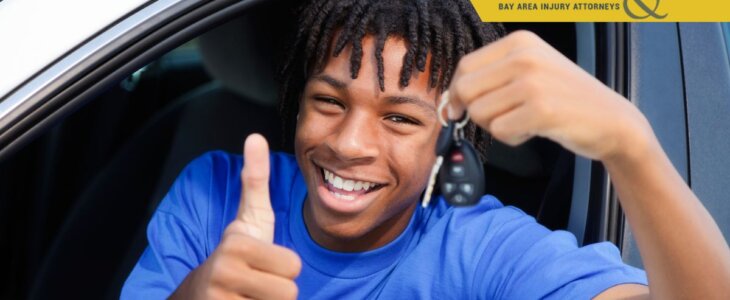When a crash involves a teenage driver, it can upend a family’s life in seconds. Young drivers are still developing judgment behind the wheel and often underestimate how quickly a situation can turn dangerous. According to the National Highway Traffic Safety Administration (NHTSA), drivers aged 15–20 made up only about 5 percent of licensed drivers nationwide in 2022, yet they were involved in more than 8 percent of fatal crashes. National data also shows a 5 percent increase in fatal crashes involving young drivers from 2022 to 2023, a reminder that these risks are not going away.
Understanding the most common causes of teen driver accidents is the first step in preventing them.
1. Inexperience
Experience is one of the biggest protective factors for drivers. According to the Centers for Disease Control (CDC), teen drivers aged 16–19 are nearly three times as likely as drivers aged 20 and older to be involved in a fatal crash per mile driven. They are still learning how to scan for hazards, judge distances, and respond quickly to changing conditions.
California’s Graduated Driver Licensing (GDL) program helps address this by requiring new drivers to log at least 50 supervised hours, including 10 at night, before moving to a provisional license. Encouraging teens to practice in various conditions—daytime, nighttime, on the freeway, and in the rain—can help build the instincts they need to avoid a crash.
2. Distractions
Phones, music, and conversations with passengers can all take a teen’s focus off the road. In fact, distracted driving contributes to a significant share of teen crashes, particularly during the summer months when, according to AAA, the “100 Deadliest Days” between Memorial Day and Labor Day sees an average of eight people killed per day in teen-involved crashes. California law prohibits drivers under 18 from using any type of phone, including hands-free devices. Reinforcing these rules at home and setting your own example can make a real difference.
3. Speeding
Speeding remains a major factor in severe crashes. Many young drivers misjudge stopping distances and underestimate how speed impacts their ability to react. Combined with inexperience, speeding can turn a minor error into a life-altering collision. Leading by example, setting clear family rules, and discussing the risks regularly are proven ways to keep speed in check.
4. Passengers & Peer Influence
Having friends in the car can increase the likelihood of risky driving behavior. California’s GDL program limits provisional license holders from carrying passengers under 20 for the first year unless an adult 25 or older is present, and prohibits driving between 11 p.m. and 5 a.m. during that same period. These restrictions significantly reduce crash rates by removing two common risk factors: peer pressure and late-night driving. Parents can reinforce these limits by ensuring their teens follow them even when they think no one is watching.
5. Impaired Driving
For drivers under 21, California has a zero-tolerance policy for alcohol. Any measurable amount can result in license suspension. The risk is real—nationwide data from the CDC shows that when teens drink and drive, their crash risk is higher at every blood alcohol level than it is for adults. Open conversations about the dangers of impaired driving, offering safe rides home, and making sure teens know never to get in a car with an impaired driver are critical steps for prevention.
If Your Teen Is Injured by Someone Else’s Negligence
When another driver’s negligence injures your teen, the law allows you to seek compensation for both immediate and long-term needs. In California, recoverable damages may include medical expenses, lost income, pain and suffering, and future losses, such as those affecting education or earning potential. These resources help support your teen’s recovery and protect their future.
FAQ for Parents
How long do GDL restrictions apply?
The learner’s permit stage lasts at least six months, and provisional license restrictions apply for 12 months or until age 18, whichever comes later.
Do nighttime and passenger limits apply to all young drivers?
They apply to drivers under 18 with a provisional license. Once fully licensed, those restrictions end, but all drivers must still obey general traffic laws.
Are teen crashes going up or down in California?
According to the California Office of Traffic Safety, fatal crashes involving teen drivers in California fell by about 10 percent from 2022 to 2023, but teen-involved collisions remain a significant concern.
We’re Here to Protect Your Family’s Future
At Casper, Meadows, Schwartz & Cook, we’ve helped countless California families whose lives were disrupted by serious car accidents. When a teen driver is injured due to someone else’s negligence, we take swift, decisive action to pursue the compensation your family needs. We will guide your claim with determination and skill so you can focus on your teen’s recovery.
Contact us today to schedule a consultation and learn how we can help secure justice and financial support for your family.


